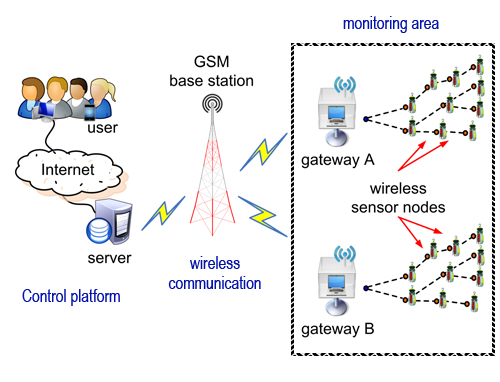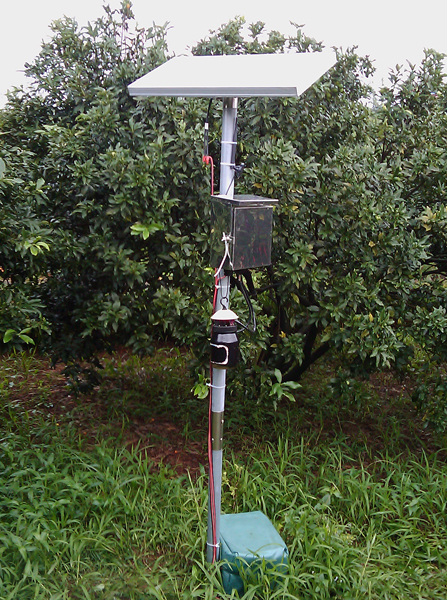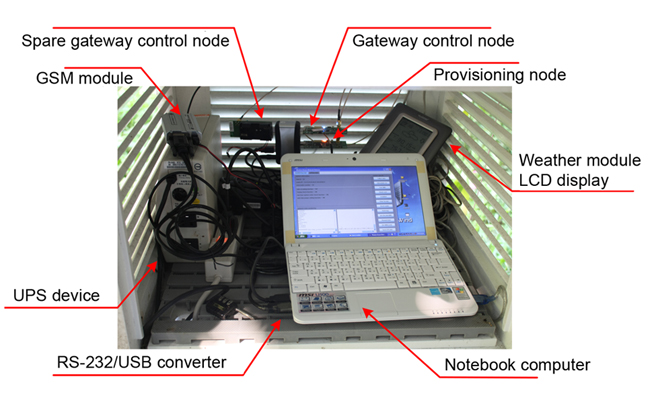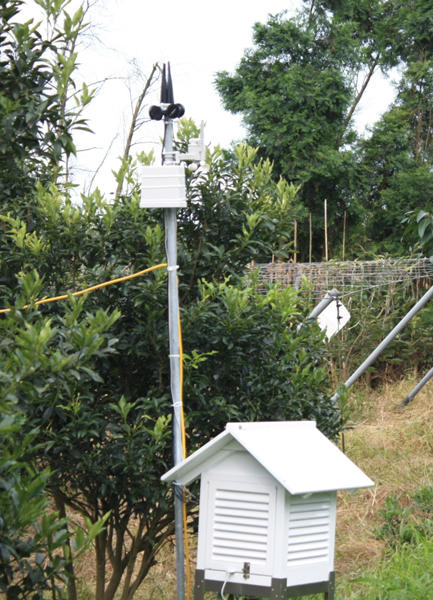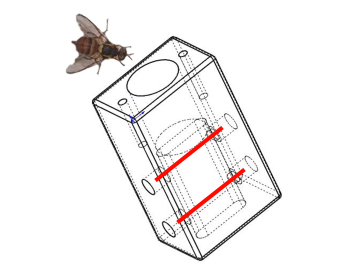Innovative techniques
The information and communication technology (ICT) has been widely used in everyday devices such as on mobile phone and tablet computer. It is also being adapted for use in agriculture, such as identification of pest species, surveillance of pest populations, variable rate technology (VRT), automatic control of greenhouse, survey of natural resources, prevention of natural disasters, etc. It is an integral part for innovative agricultural applications. In the same line of application, TARI has developed a monitoring system for oriental fruit fly. The framework and application are as follows:
Composition of the monitoring system
The monitoring system (Figure 1) mainly includes the oriental fruit fly-infested area monitoring network and the control platform. The monitoring network is a wireless sensor network (WSN) in which 10 wireless sensor nodes are deployed. It can automatically transmit the number of flies detected by the sensor node on the automatic trapping/counting device (Figure 2) and data of various environmental factors (such as temperature, moisture, atmospheric pressure, precipitation, and wind speed and direction) to the field gateways. These data are then transmitted to the database of the control platform every 30 minutes through the GSM (global system for mobile communications) base station. The field gateway incorporates mainframe computer, weather LCD display, GSM communication module, uninterrupted power system, gateway control nodes and node deployment devices (Figure 3), and is placed inside the weather house (Figure 4) to prevent weather elements from damaging the peripheral modules and to increase its service life. Each sensor node is installed in a stainless electric control box, and the power is supplied by a solar panel. The gateway’s power is from the field, and is connected to a set of UPS, which not only avoid power outage but also serve for line filtering and voltage regulation functions.
Principle of the infrared detector
The automatic trapping/counting device (Figure 5) employed in this system uses a sponge dipped with methyl eugenol as an insect lure and hung in an insect trapper. When oriental fruit flies pass through the trapper, they get counted when they block the infrared waves from a detector. The design of this device incorporates domestically developed Octopus II wireless communication module, commercially available oriental fruit fly insect trapper, and counting circuits. The new type of trapping tunnel is streamlined, and the hole of emitting end of the infrared detector made smaller. These designs are not only more labor- and time-saving in making these devices, but also more accurate in insect counting.
Applications of the system
Currently this system is installed in eight locations, including Yuanlin Township of Chang County, Jhuci Township of Chiayi County, and Yuanshan Township of Yilan County. The fruit trees monitored include guava, ponkan, pear, and kumquat. Since 2009, this system has been used in one location after another to collect field data. After years of strict testing on transmission time for different data, performance of transmission protocols, performance of system integration, and long-term monitoring in the fields, the system has undergone fine-tuning for monitoring function improvement. This system has also gone through the test of several typhoons while in operation, and has proved to be fairly good in terms of accuracy, stability and resistance to weather elements.


